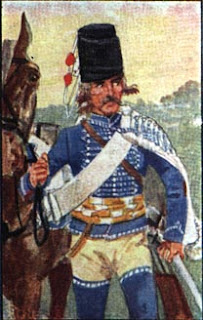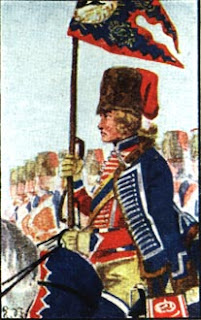

From the Seven Years' War Project wiki:
Early in the afternoon, while Frederick was only a few km from Neumarkt, he learned that there were 1,000 grenzers and hussars in this town, with the Austrian bakery at work there and engineer people marking out an Austrian camp. Therefore, before entering Neumarkt, Frederick sent a regiment to ride quietly round it on both sides and to seize a height he knew of. Once this height had been seized by his troops, Frederick bursted the barrier of Neumarkt with the hussars, volunteers and freikorps of the vanguard, and dashed in upon the 1,000 light troops, flinging them out in extreme hurry. The light troops then found the height occupied and their retreat cut off. Of the 1,000 light troops, 569 were taken prisoners and 120 slain. Better still, the Austrian bakery in Neumarkt delivered 80,000 bread-rations, prince Charles had exposed his bakery too far ahead of his army.
Meanwhile, fearing that Frederick would move on Striegau (actual Strzegom) to cut his line of communication with Bohemia, prince Charles had come across the Weistritz River (more commonly called Schweidnitz Water), leaving all his heavy guns at Breslau, and lay encamped that night in a long line perpendicular to Frederick's march, some 16 km ahead of him. Prince Charles had now learned with surprise how his bakery had been snapped up by the Prussians.
Public domain sources:
Carlyle T., History of Friedrich II of Prussia vol. 18
Donnersmarck, Victor Amadaeus Henckel von, Militaerischer Nachlass, Karl Zabeler, 1858
Relation de la bataille de Leuthen, Vienna, January 1758, pp. 472-477
Relation de la bataille de Lissa, Berlin, January 1758, pp. 477-483
Tempelhoff, Fr., History of the Seven Years' War Vol. I pp. 121-147 & 176-188 & 190-, as translated by Colin Lindsay, Cadell, London, 1793
Other sources:
Cogswell, Neil, Journal of Horace St. Paul 1757: The Advance to Nismes, Seven Years War Association Journal Vol. XI No. 3 and Vol. XII No. 2
Fuller J. F. C., The Decisive Battles of the Western World, Granada Publishing Ltd, 1970, pp. 571-576
Discussion:
Note that after using one of his Hussar Regiments to seize the height behind the town that "Frederick bursted the barrier of Neumarkt with the hussars, volunteers and freikorps of the vanguard". This suggests to me that Fred at Neumarkt had considerably more forces at his disposal than just a couple of regiments of Hussars. Perhaps we ought to include 800 volunteer infantry and a company or two of Foot Jaeger in the Prussian OOB?
4 comments:
Are you suggesting a Whig historian like Carlyle might have been less than completely even-handed in his reconstruction of events?
We are shocked--shocked!--I say!
Speaking of Whigs, Herzog, may I congratulate you on your own?
The historiography of the period is not yet something I've started to look at and, so far as I am concerned, all historians are created equal!
Regards,
Greg
Thanks for posting the link to the wiki (as well as all of the other excellent posts you make)! This will come in handy for furthering my (rueful lack of) education on the period. :-)
Thanks for posting the link to the wiki (as well as all of the other excellent posts you make)! This will come in handy for furthering my (rueful lack of) education on the period. :-)
Post a Comment